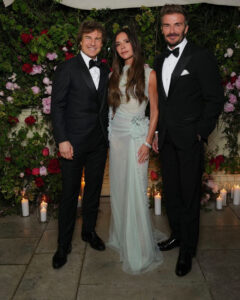What is ‘the far right’ in the political – or social – sphere? We hear this phrase from various authorities, but when the admirable Senator Sharon Keogan asked Justice Minister Helen McEntee for a definition, the minister dithered over her response.
She was “not sure there is a definition,” said Ms McEntee. It was, she suggested vaguely “obviously a political ideology or a particular view that a person has”.
She elucidated further: “We have seen people to be anti-government, anti-state, anti-women’s rights, amongst other things – that would be my own particular view of those who claim to be far-right.”
Right
But which category of people actually claim to be ‘far right’? Surely it is mainly other agencies – An Garda, RTÉ, politicians – who make this claim? It seldom seems to be these mysterious ‘far right’ groups themselves.
Moreover, the ideology of the ‘far right’ has never been ‘anti-Government’ or ‘anti-state’. Indeed, the most defining aspect of ‘far right’ political thinking is a strengthened, even a militarised state, with expanded state control in every area of life.
Although in that sense, it’s not very different from the ‘far left’: Stalin and Hitler got along so well (until they fell out) because their ideas were essentially similar.
Is the ‘far right’ anti-women’s rights? Historically, yes, it would be patriarchal, and yet the two leading European leaders who represent genuine right-wing policies are women – Marine le Pen in France, and Georgia Meloni in Italy.
None of these conditions apply to Ireland today, as far as I can see”
Fascist movements have also attracted women: Julie Gottlieb’s study Feminine Fascists (published by the University of Manchester) documents that.
These women claimed that certain fascist movements offered “equality” – to dress up in military-type gear, speak at meetings, get active.
None of these conditions apply to Ireland today, as far as I can see. Yes, there are people who oppose immigration; there are people who foment street violence; and there are those who protest outside TDs’ homes, which is completely unacceptable.
Definitions
But if the Justice Minister can’t really define what ‘far right’ means – or misjudges certain aspects of its manifestation, such as the classic position on state control – then surely the phrase shouldn’t be chucked around so promiscuously?
Besides which – as Fintan O’Toole has pointed out – many people hold a mixture of ‘right’ and ‘left’ opinions. Catholics, he noted, are often socially conservative but economically veering more to the left.
Senator Keogan asked if this brandishing of ‘far right’ was linked to ‘hate speech’. A perceptive question: that, too, has not yet found a satisfactory legal definition.
Catholics, he noted, are often socially conservative but economically veering more to the left”
***
It’s the bi-centenary of the death of the Romantic poet Lord Byron, who died in April 1824, aged 36, while supporting Greek independence.
To the Victorians, Byron was a scandalous figure, described by Lady Caroline Lamb as “mad, bad and dangerous to know”. He was awful to his wife, had many mistresses and an obsessive (and incestuous) relationship with his half-sister, Aurora Leigh, by whom he probably had a daughter.
Byron’s views of women would not pass scrutiny today. He liked women to talk, he wrote, “because then they think less”. He famously wrote that man’s love is “a thing apart”, but “tis a Woman’s whole existence”.
He was a hedonistic pagan, yet he championed Catholic Emancipation. He also wrote in a letter: “I am really a great admirer of tangible religion; and am breeding one of my daughters a Catholic, that she may have her hands full. It is by far the most elegant worship… what with incense, pictures, statues, altars, shrines, relics and the Real Presence, Confession, absolution – there is something sensible [substantial] to grasp at.”
He was great friends with the Irish melody-maker, Tom Moore, who he called “gentlemanly, gentle and, altogether, more pleasing than any individual with whom I am acquainted.”
Byron placed his memoirs with Tom, who passed them on to a group of Byron’s friends – who burned them as being too decadent to publish.
Despite his shocking reputation, my pious Co. Galway grandmother was an undiminished Byron fan. But then no one could deny his status of genius.
The Destruction of Sennacherib (“The Assyrian came down like a wolf on the fold/And his cohorts were gleaming in purple and gold”) must be one of the most vivid and terrifying poems ever written.
All things glitz and glamour

By contrast with Byron’s 19th Century decadence, some of the most popular celebrities of our time seem downright wholesome. Step forward ‘Posh Spice’, Victoria Beckham, who has just celebrated her 50th birthday with acclaim and élan.
Married successfully for 24 years, parents of four children, forming a strong family unit who pull together, David and Victoria Beckham are the supreme role models of today. Who says the world is going to the dogs?
The pair, it will be recalled, were wed at Luttrellstown Castle in Co. Dublin, inspiring every betrothed couple since to emulate the golden couple’s wedding extravaganza.


 Mary Kenny
Mary Kenny Minister Helen McEntee
Minister Helen McEntee 